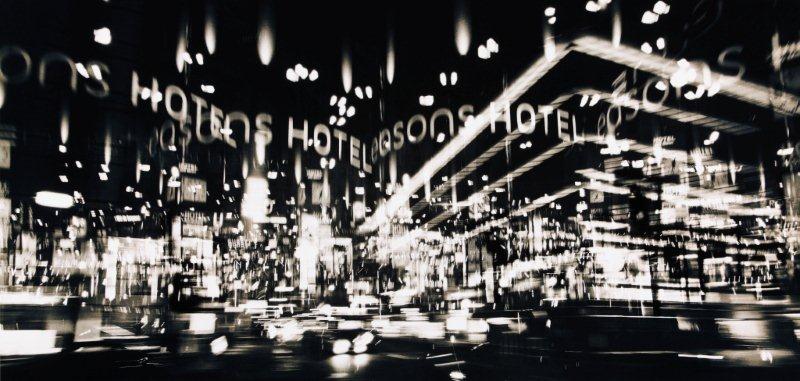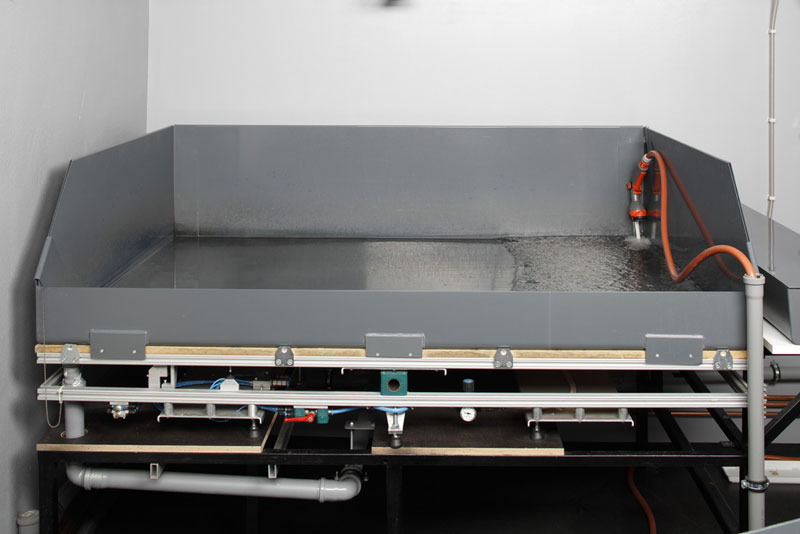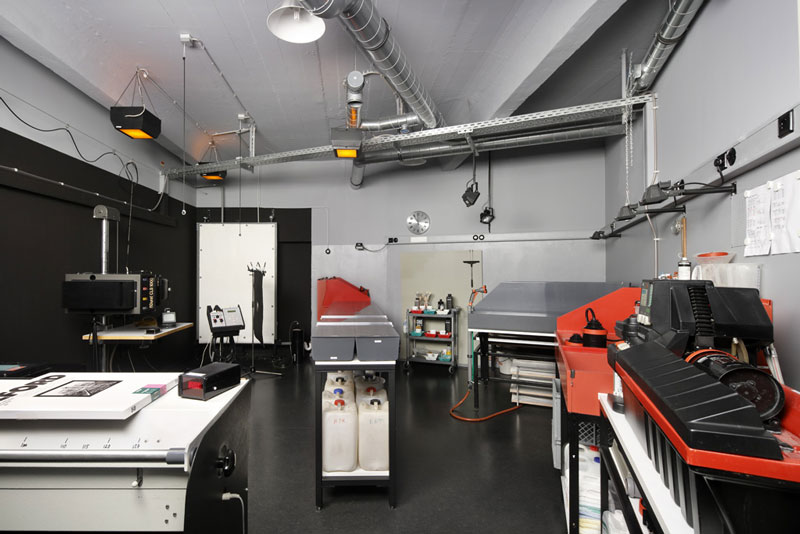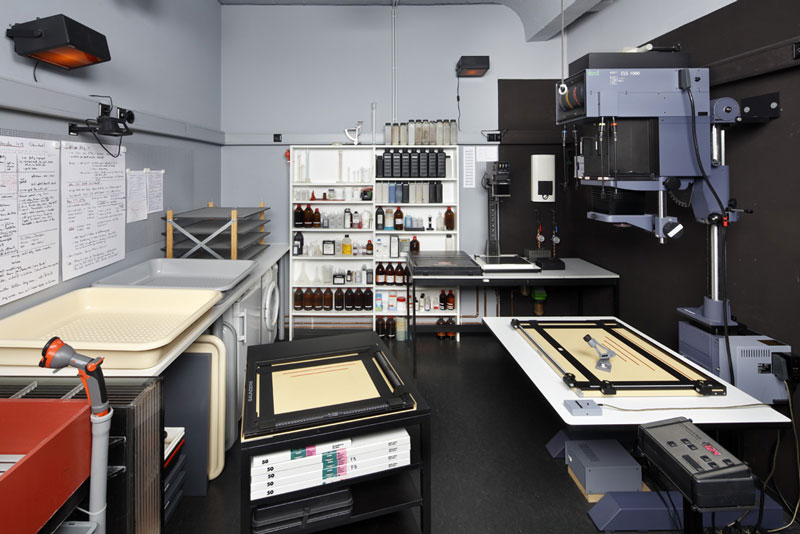High-tech in the Darkroom
A look back at analog times: Torsten Warmuth’s virtual darkroom museum

The same premises that are nowadays home of Digital Darkroom Berlin, a print studio that produces high-quality fine art prints for artists from all over the world, hosted until 2016 one of the most extensive and technically sophisticated photographic darkrooms.
Here, in his studio, the artist Torsten Warmuth had constantly developed new shooting techniques and darkroom processes to be able to realize his artistic ideas.
Silver Painting – the Process
The technique of Silver Painting, which was developed around 2009, is based on traditional photographic processes and materials, which are newly combined and expanded by current light technologies. The process of creating a Silver Painting requires analog photographic craftsmanship at the highest level and does not require any digital image processing.
Typical are the long exposure times and deliberate blurring of movement during shooting. During the exposure of a Silver Painting, light of different wavelengths is gradually projected onto silver gelatin paper through a template of several negatives mounted on top of each other (sandwich process). After this successive application of light, bleach and different toners are painterly applied to the resulting positive. The chemical reaction with the picture silver creates colors that give the motifs their own aesthetics and depth.
Most Silver Paintings are unique — each negative being used only once due to the complex analog technique.
Darkroom Equipment
Documentation of a Complete B/W Darkroom
Highlights
I have often said that the negative is similar to a musician’s score, and the print to the performance of that score. The negative comes to life only when “performed” as a print.
Ansel Adams
QUESTIONS AND ANSWERS
Interview With the Former Owner
QUESTION: This website documents a complete and very special darkroom.
ANSWER: Technically speaking, there are two darkrooms: one for prints up to 50 x 60 cm, and one for large format prints up to 2 metres in length (the latter being a rather unusual process). The darkroom has become history by now. The original idea was to give it to a museum in its entirety in order to document the complex darkroom processes and preserve them for the future. Unfortunately, this didn’t work out. By now, the darkroom equipment is spread all over the world, in single pieces or bundles. It is actually a nice idea that with the help of my former equipment, images can be produced in so many places.
Q: You are claiming the darkroom to be “one of the most complete darkrooms in the world” – isn’t that a bit exaggerated?
A: Well, I haven’t heard of any other darkroom with comparable equipment that is still existing and documented – which does not necessarily mean that there is no other darkroom like that. There might, for instance, be darkrooms with different emphases concerning functionalities or processes.I have contacted numerous photography experts, ranging from photo historians to laboratory owners, also in the USA, where b/w-photography is still much more important and popular than in most European countries. Everyone agreed that it is not only the very complete range of machinery and technical equipment that make the darkroom so unique, but also the fact that everything is still fully functioning.
TRIVIA (in German only)
True or False? | Already Knew?
STIMMT’S?
Kondensorvergrößerer
Kondensorvergrößerer mit Opallampen erzeugen knackigere und damit bessere Schwarzweiß-Prints.
SCHON GEWUSST?
Abwedeln mit Masken
Abwedeln mit den Händen bleibt Amateuren vorbehalten. Um eine genau umrissene Stelle abwedeln zu können, muss eine passgenaue Maske angefertigt werden.
SCHON GEWUSST?
Trocknen von Großvergrößerungen
Eine 2-Meter-Großvergrößerung zu trocknen, ist kein Kinderspiel. Es war eine Zeit lang en vogue, Großvergrößerungen an den Rändern mit Nassklebeband auf Glasplatten (idealerweise Panzerglas) zu befestigen und im trockenen Zustand mittels Rasierklinge abzulösen.
FILMTIPP
Blow Up
Michelangelo Antonionis „Blow Up“ ist einer der wenigen Filme, in denen eine Dunkelkammer eine zentrale Rolle spielt und Bilder nicht auf Wäscheleinen getrocknet werden.
STIMMT’S?
Bilder hängen zum Trocknen an Wäscheleinen
Natürlich darf man Bilder nicht senkrecht trocknen; das Bild trocknet dann ungleichmäßig, ist oben schon trocken und unten noch nass, bleibt so für immer wellig.
SCHON GEWUSST?
Anti-Newton-Gläser
AN-Gläser sind schwer zu finden, es funktionieren aber auch sog. „entspiegelte“ Bilderrahmengläser, auf die richtige Größe zurechtgeschnitten.


